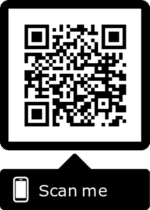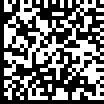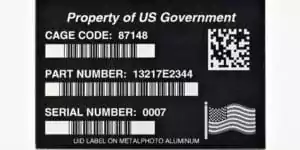QR and Data Matrix codes are used around the world for a wide range of applications. From a website link on a business card, to a fortune 500 asset tracking system, these codes have become increasingly relied upon to store information.
QR Codes
Appearance
QR and Data Matrix codes share many traits in common, the most prominent of which is their appearance. They are both 2D barcodes made for scanning. However, unlike the traditional UPC barcodes you find at the grocery store, these codes are slightly different.

Both tags feature a square or rectangular design shape, with the inner pattern being comprised of smaller white and black squares.
QR codes also feature distinct larger squares near the corners of their design. These squares are used by the scanning device to help locate the code.
QR Code Features
QR or “quick response” codes can store around 4000 characters of information, including numbers and text.
In addition, the symbols have built-in error correction. This means the code can still be read even if the design is partially removed or damaged. This adds to the viability of using codes in an industrial setting. It also provides freedom in terms of design, as a logo or other image can be placed in front of the squares without blocking the scan.
While error correction is considered a benefit, the greater level of error correction, the less information a code can store.
Uses
Since their beginnings in the auto manufacturing industry, the QR code has been adopted by countless industries for a wide array of purposes.
QR symbols are one of the most commonly used codes for industrial asset tracking. Metal asset tags provide the ability to store information about equipment, tools, and machinery in a durable medium.
With advancements in blockchain technology, there will be a greater emphasis on QR and barcode tags in the near future.
One of the biggest changes the codes have faced is their use for promotional purposes. While the data matrix has stayed mostly within the industrial space, businesses have adopted these symbols as a means to communicate their message to a potential client or customer. It’s hard to go anywhere without seeing a QR code on a billboard, product packaging, or on a business card.
Modern smartphones come out of the box these days ready to scan codes without any additional software. This ease of access has led to a boom for QR symbol usage.
As more and more traditional mediums turn digital, QR codes have also begun their use for modern documentation. For example, if you catch a basketball game or head to the airport, it’s likely you’ll use a code stored on your phone for the gate checker to scan.
Data Matrix Codes
Appearance
As mentioned, data matrices are similar to QR codes in design. They are made of small black and white squares in a coded pattern to form a big square. Unlike QR codes, they do not feature the same larger squares in the corners.

Sometimes these codes are combined into a larger pattern in order to hold even more information. The only limitations are what the scanning device can read.
Features
Data matrix symbols are useful for their ability to store a lot of information in a small space. These codes can store up to 2335 characters within their pattern.
These codes are often used for computer parts or other small electronics.
Their primary usage is for industrial marking and tracking. The symbol is applied to an asset such as a machine via a metal nameplate or label. It can then be easily accessed for scanning.
In some instances, the code is marked directly on equipment via dot peen marking.
Examples
Food Processing Industry
The food processing industry involves complex operations with many moving parts, steps, and inputs. The ability to track and process information is incredibly important to prevent mistakes before they occur. For example, a misplaced ingredient can cause cross contamination, wasted production time, and even more issues.
The tracking functionality also keeps production processes running as smoothly and efficiently as possible as it provides crucial info to operators and management.
UID Tags
When it comes to military applications, information is everything. This has led to the Department of Defense instituting MIL-STD-130.

In these guidelines, the DOD mandates the use of an asset tracking system called UID. UID (Unique Identification) involves using metal labels with data matrix codes to effectively mark and monitor military assets.
Metal Barcode Tags
Both QR and data matrices are frequently included as part of metal identification tags. Metal nameplates and labels allow for the addition of a barcode to nearly any surface. The metal substrate means you get the benefit of a code, but still maintain industrial strength and durability.
Photo Anodization
Photo anodization is typically the preferred solution for adding a barcode to metal tags and nameplates. They can be produced with a matte finish, allowing for a barcode that is incredibly easy to scan. Additional information is often added such as a human readable serialized number, company logo, or other info.
Screen/Digital printing
Another popular process for adding 2D barcodes is printing, both digital and screen printing. Digital printing is similar to most standard ink printers, while screen printing involves using a screen to filter color to only the areas specified by the design.
Both of these printing techniques leave a topical ink substance which is prone to wear. While not nearly as durable, they are a great option for certain applications. (I.e. an indoor environment that doesn’t expose the tags to heavy wear and tear.)
Labels and Decals
Barcodes are not limited to just strictly metal materials. They can also be added to vinyl and polyester printed decals and labels. This can be a more economical solution for some organizations, especially if they are going to only use the codes for a short amount of time before disposing of them.
Wrap-Up
Both QR and Data Matrix codes are excellent solutions for storing information. Their ability to encode data in an easily scanned design creates nearly unlimited applications.
Data matrix codes excel best at storing info in small spaces. From electronics parts to tiny manufacturing pieces; if they need tracked, data matrix is a solid option.
QR codes are more widely used, and for good reason. Nearly everyone has a scanner in the pocket, making them ideal for consumer messaging.
Creating a computer part that is incredibly small? Data matrix can store a ton of information in that small space. Adding a code to your equipment next to your logo which links to your website? QR codes are a great fit.
When deciding which code to use, it really just comes down to your specific application and preferences.